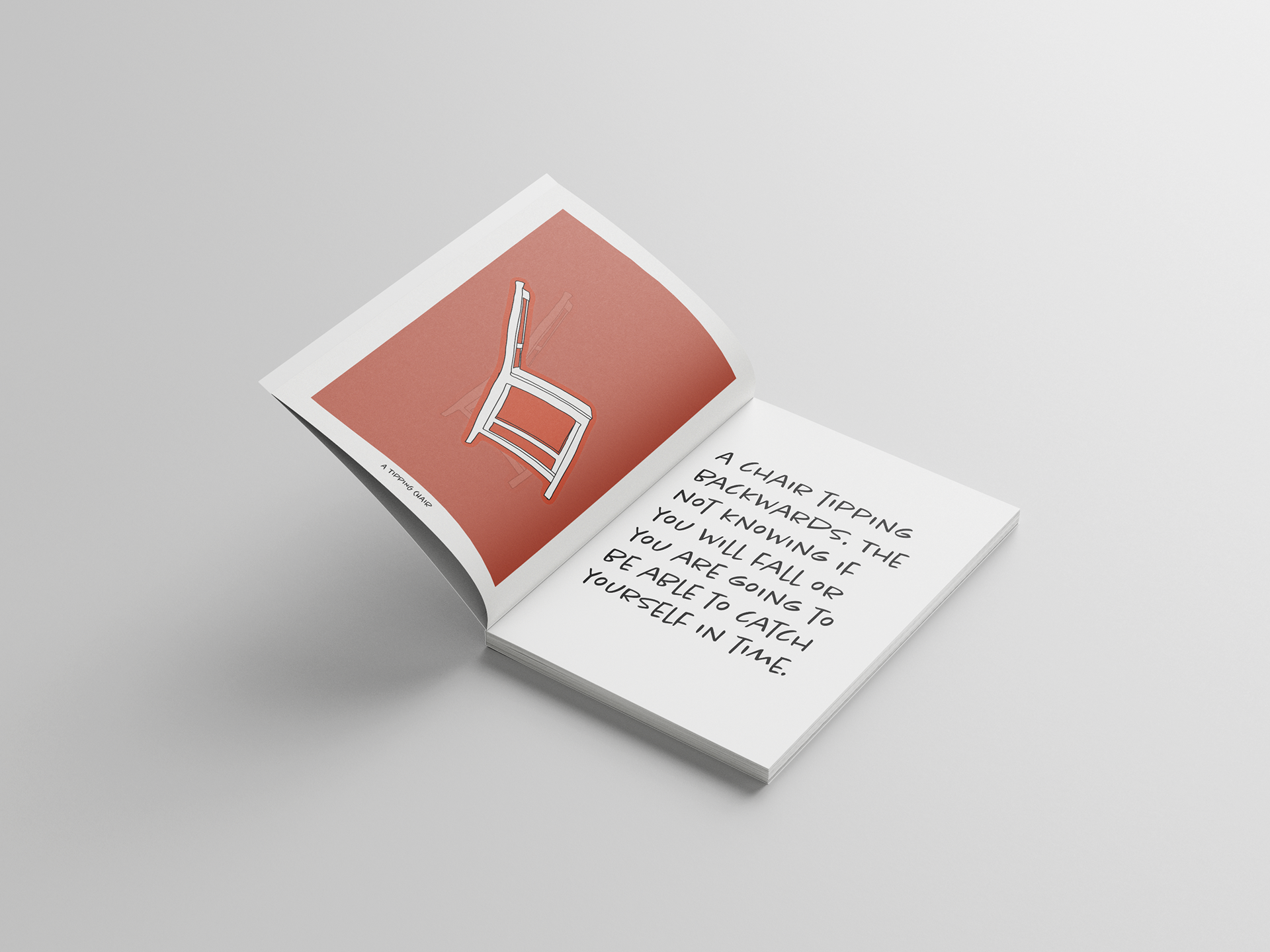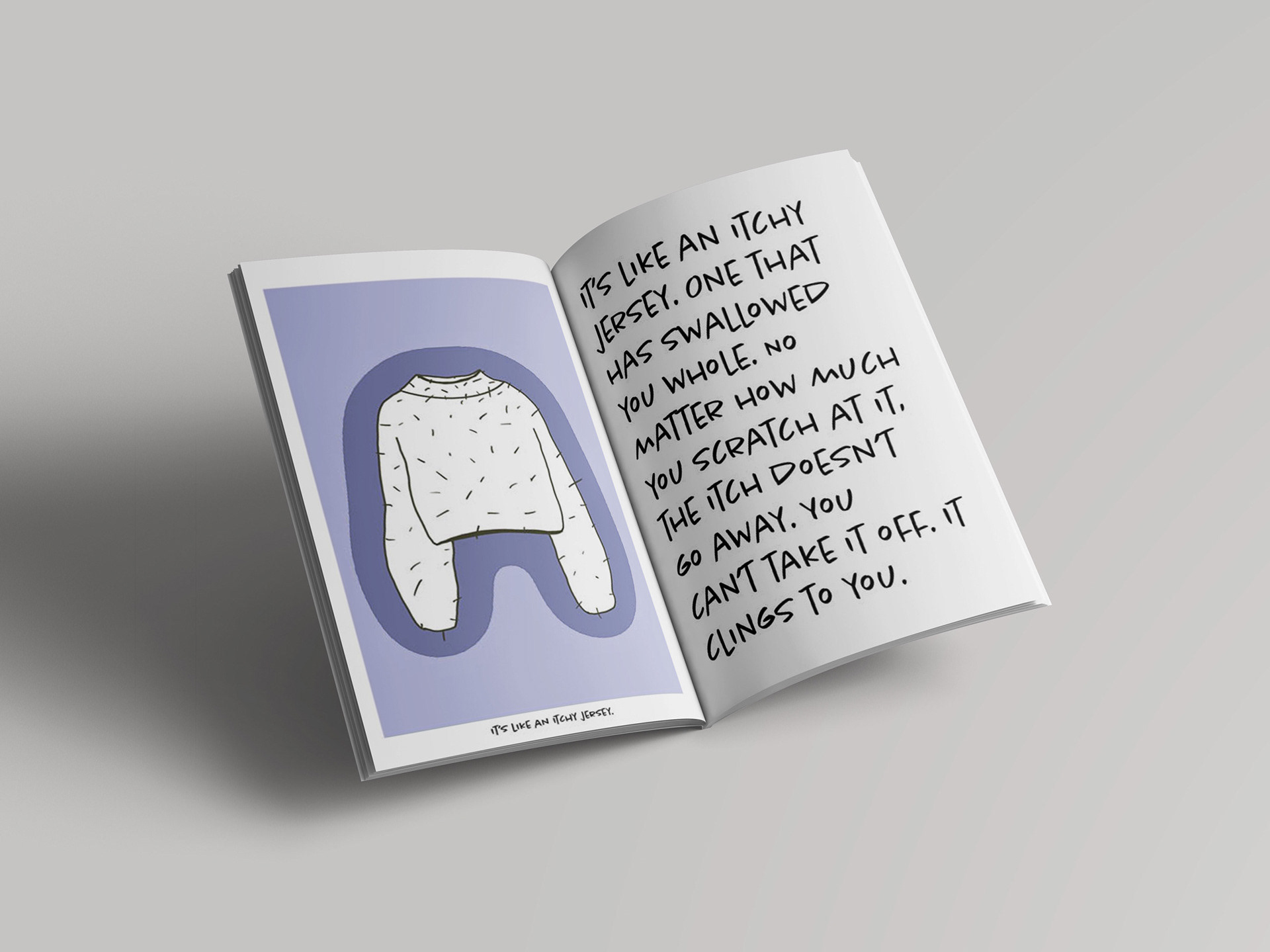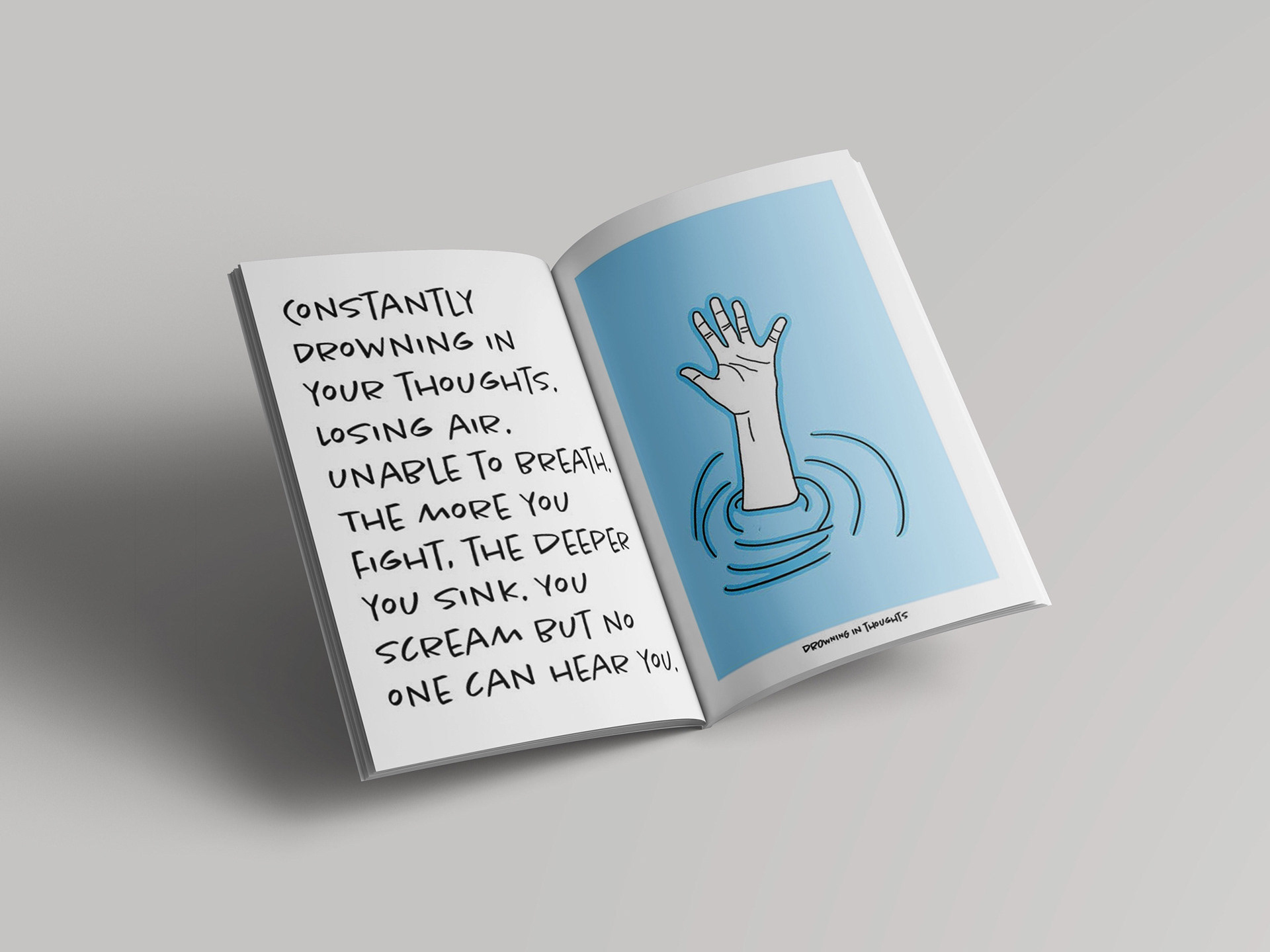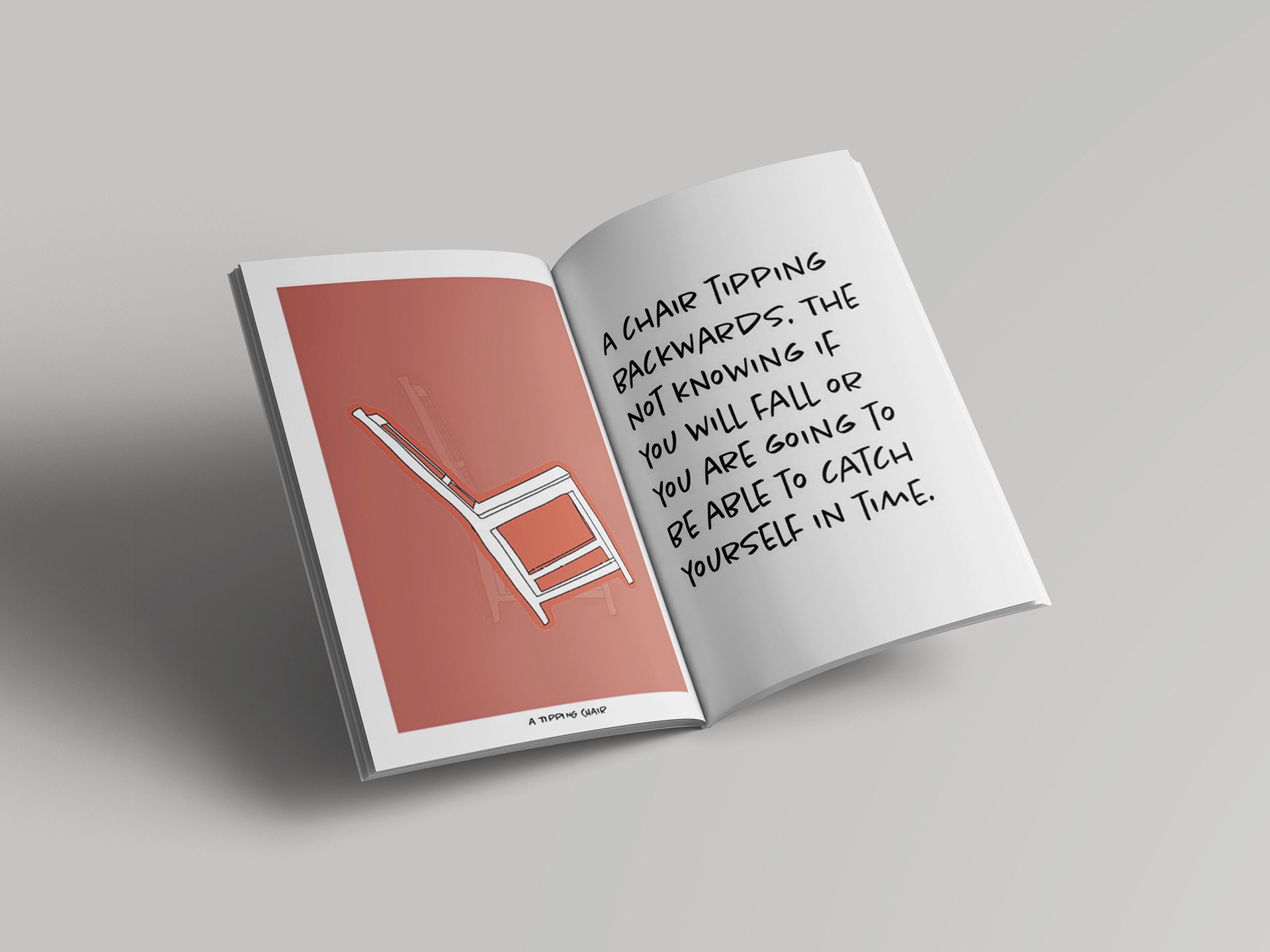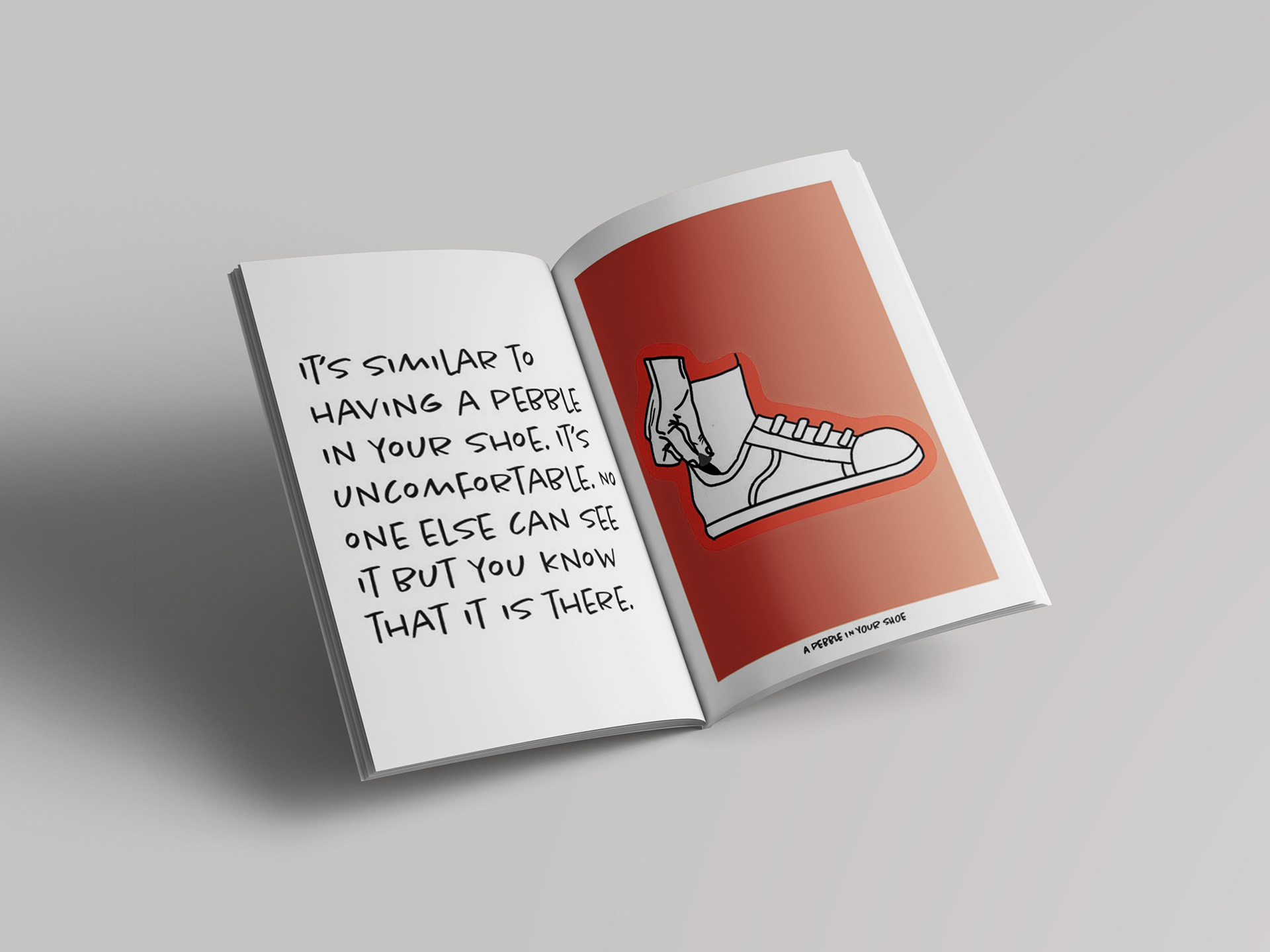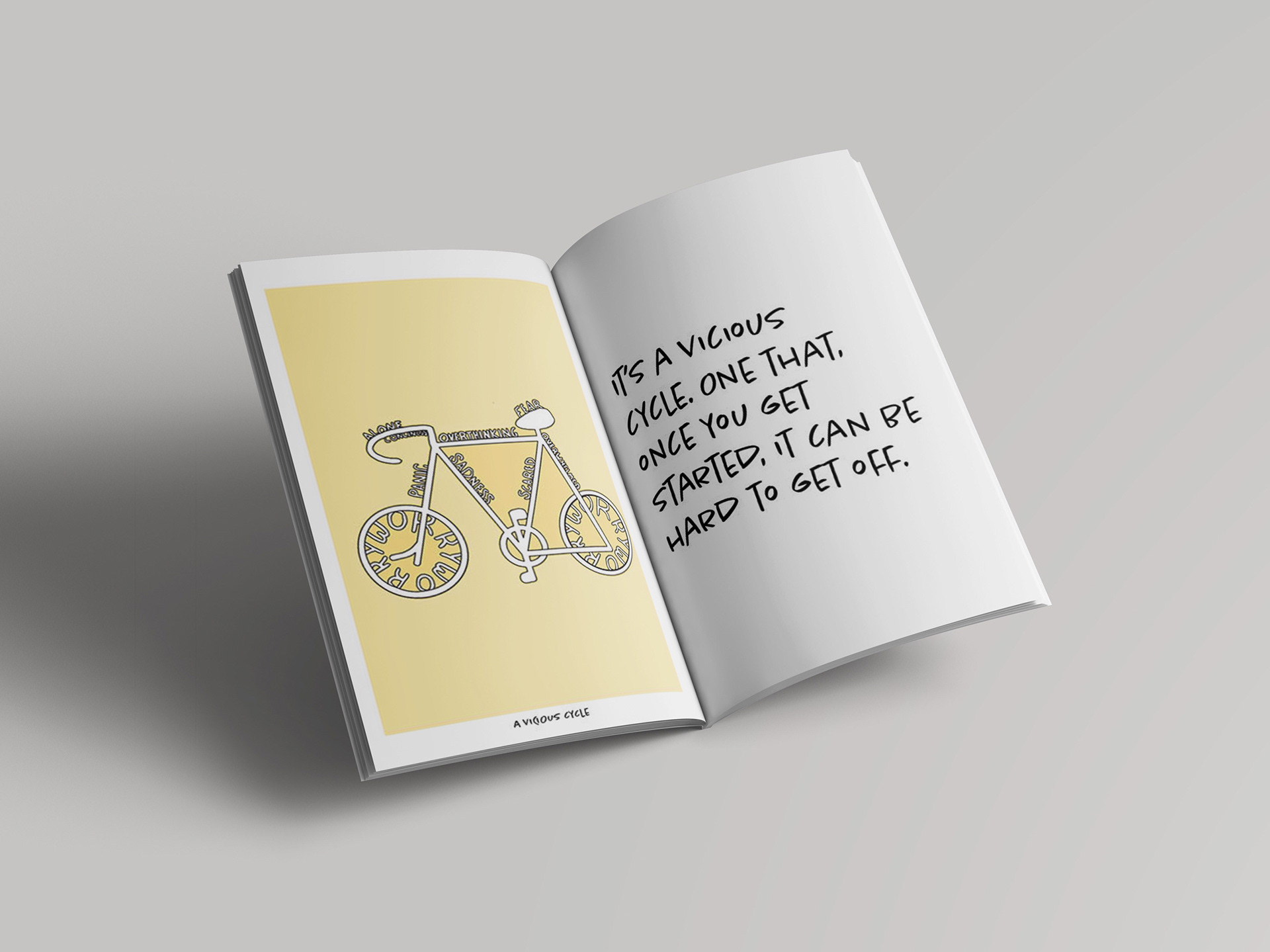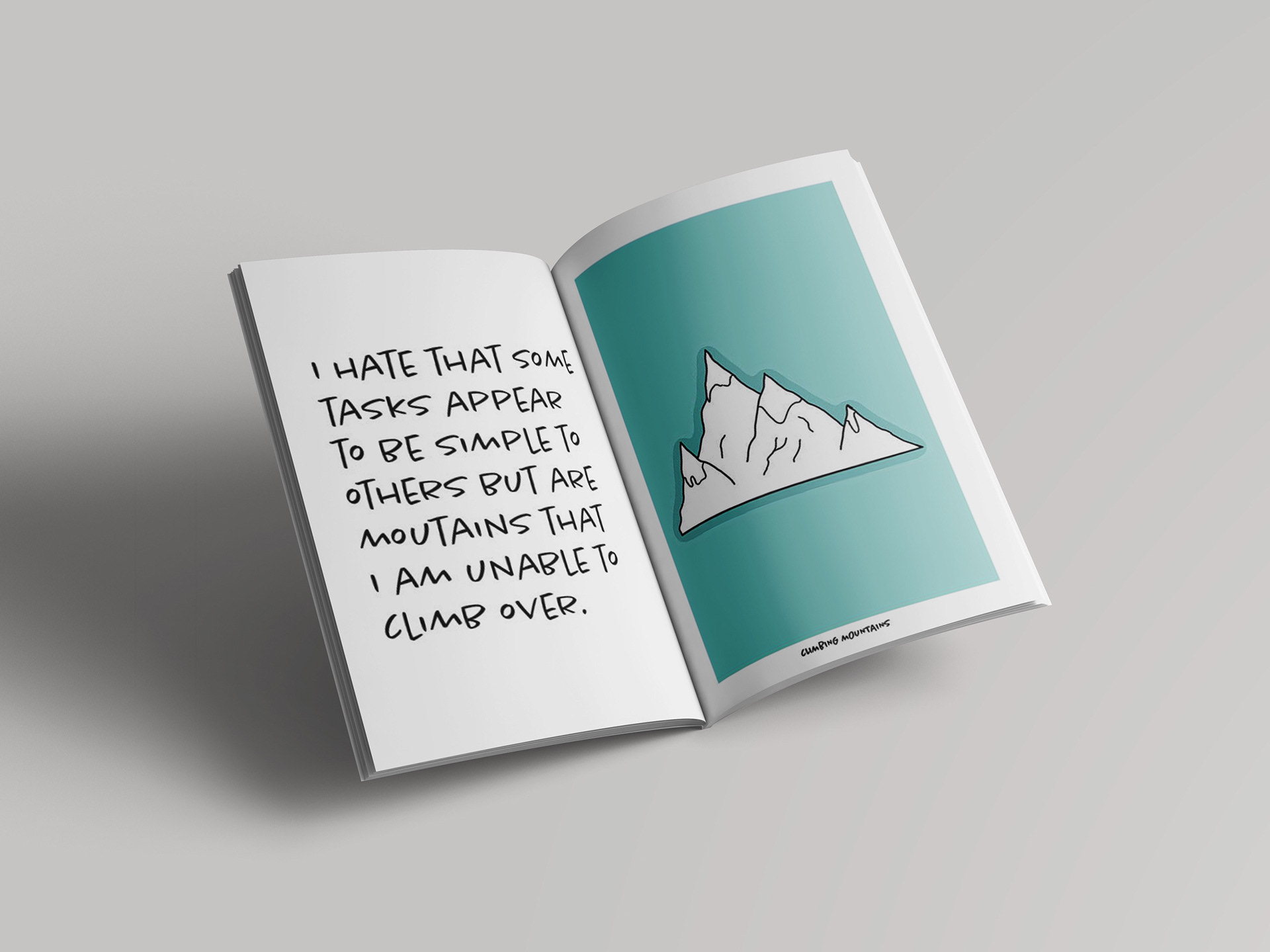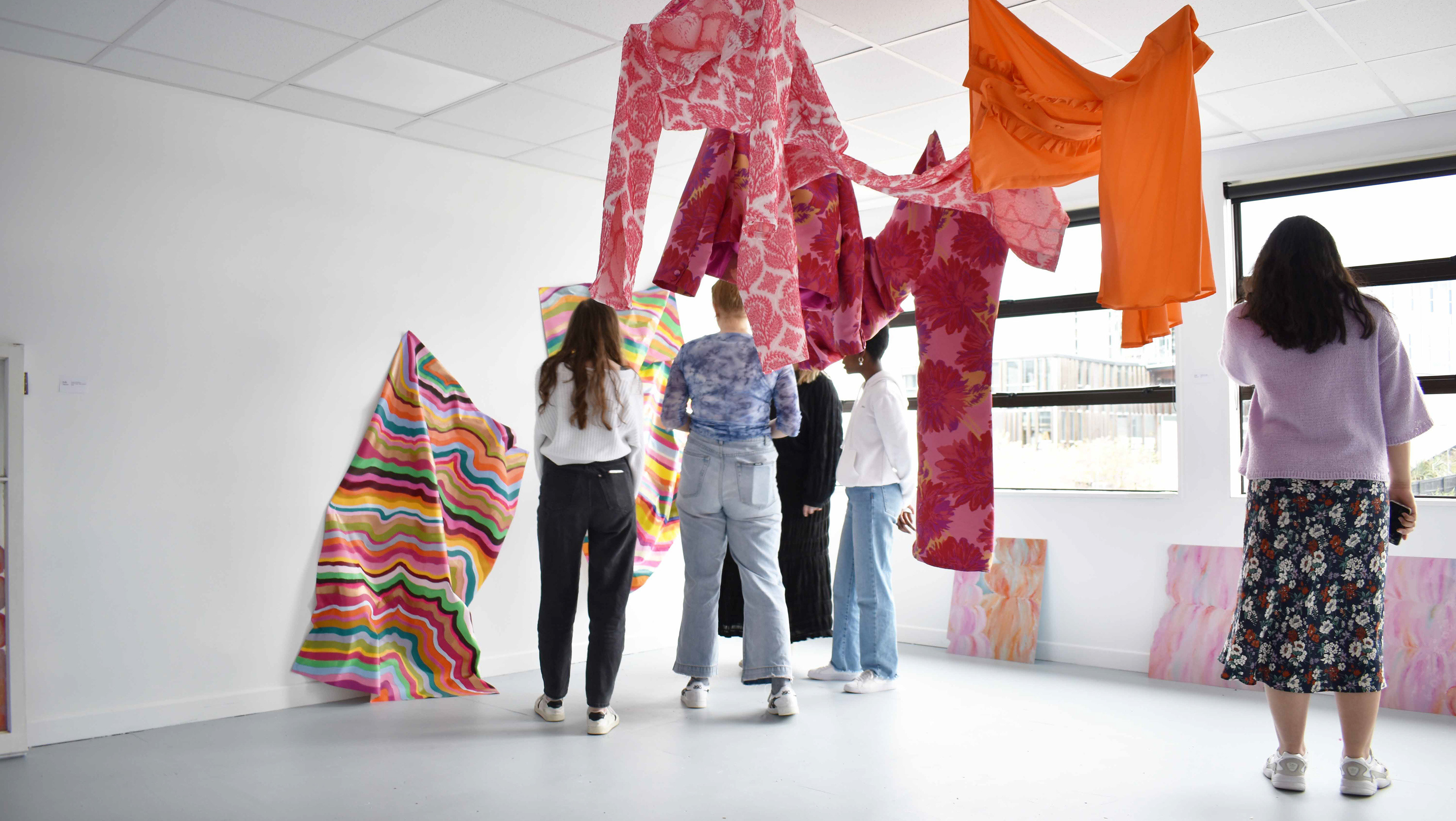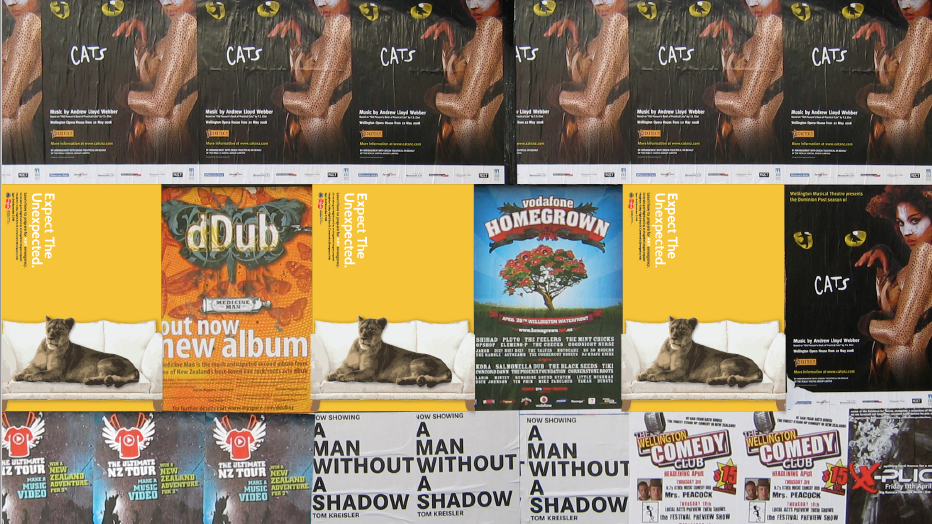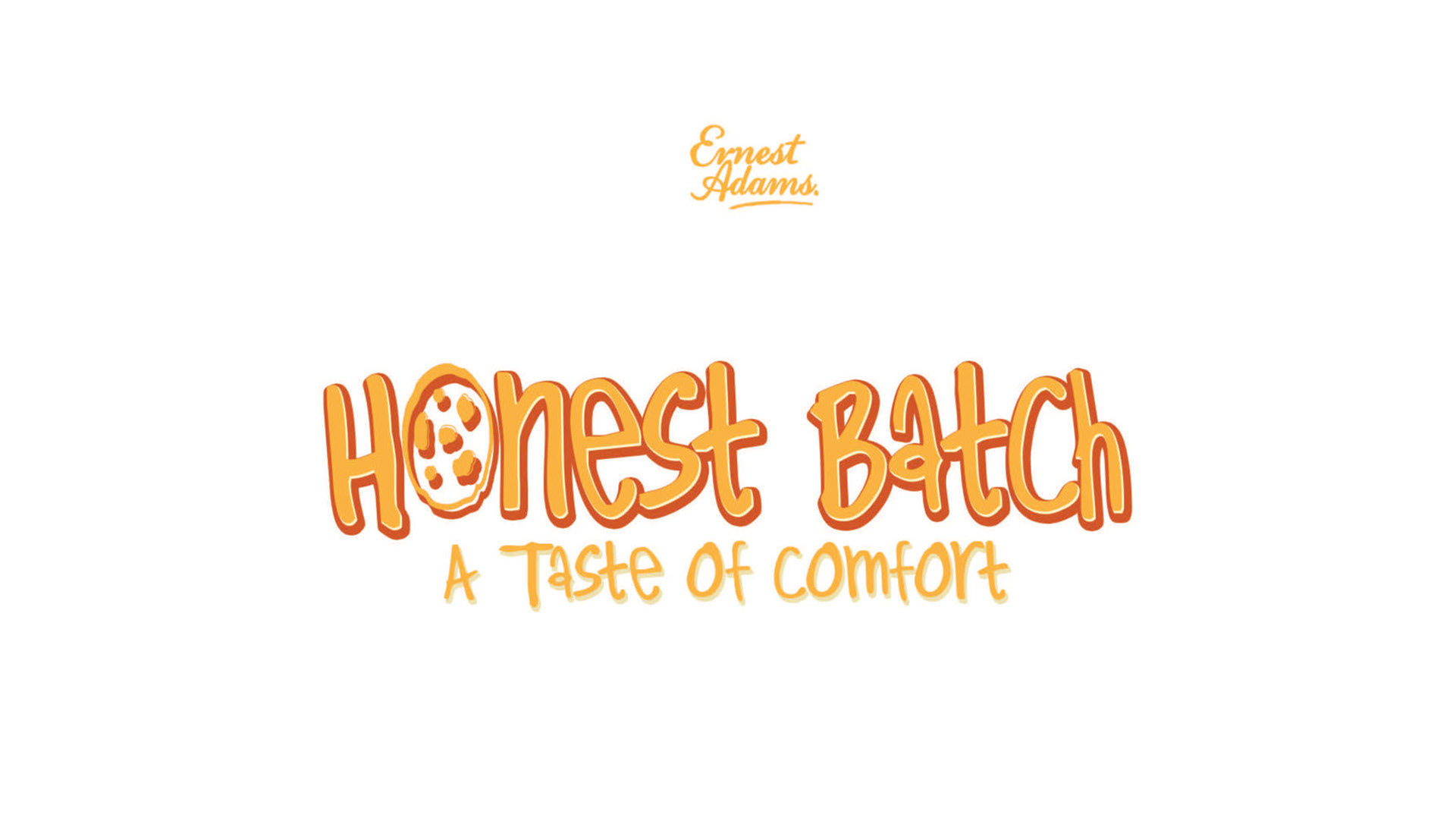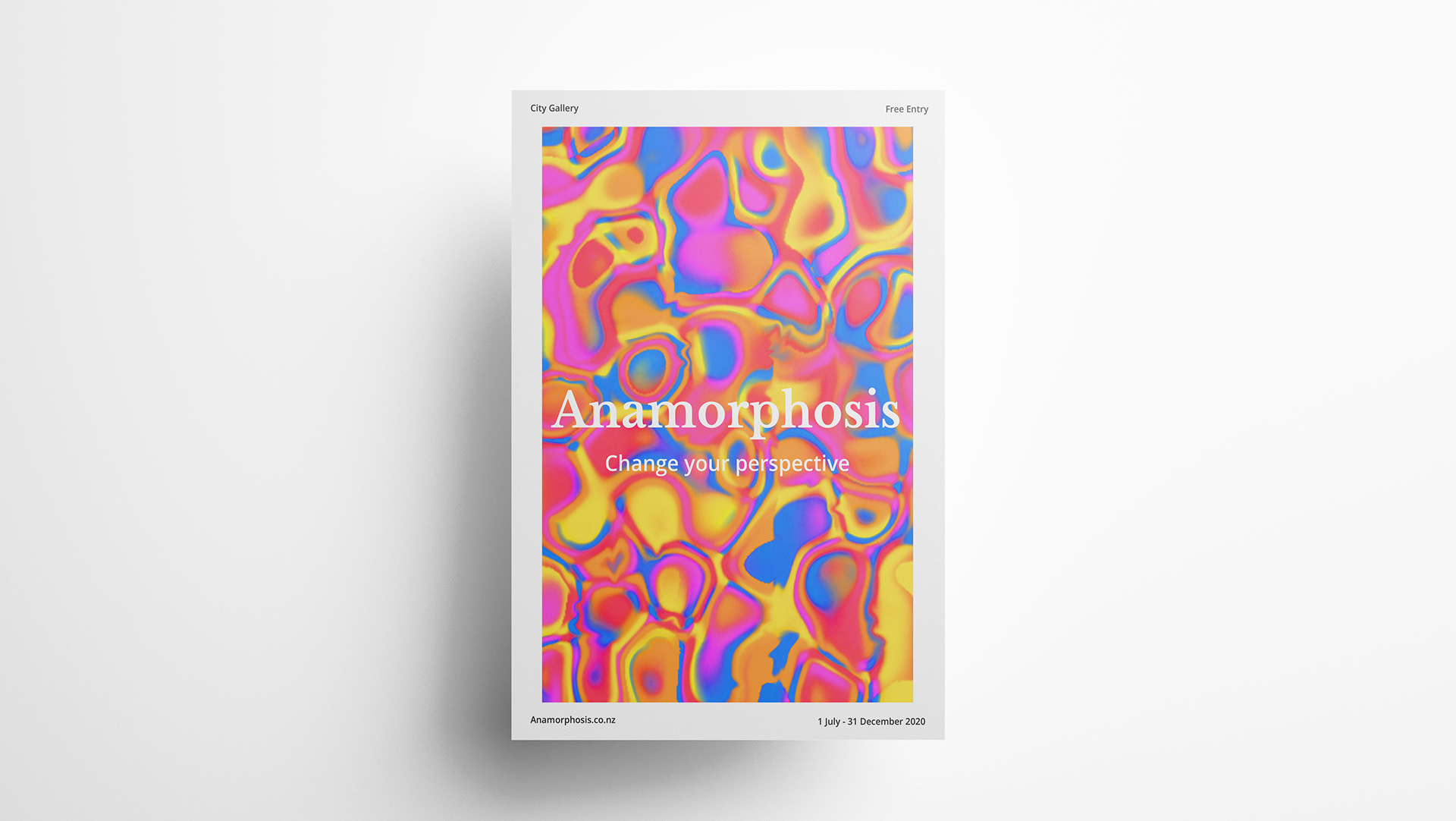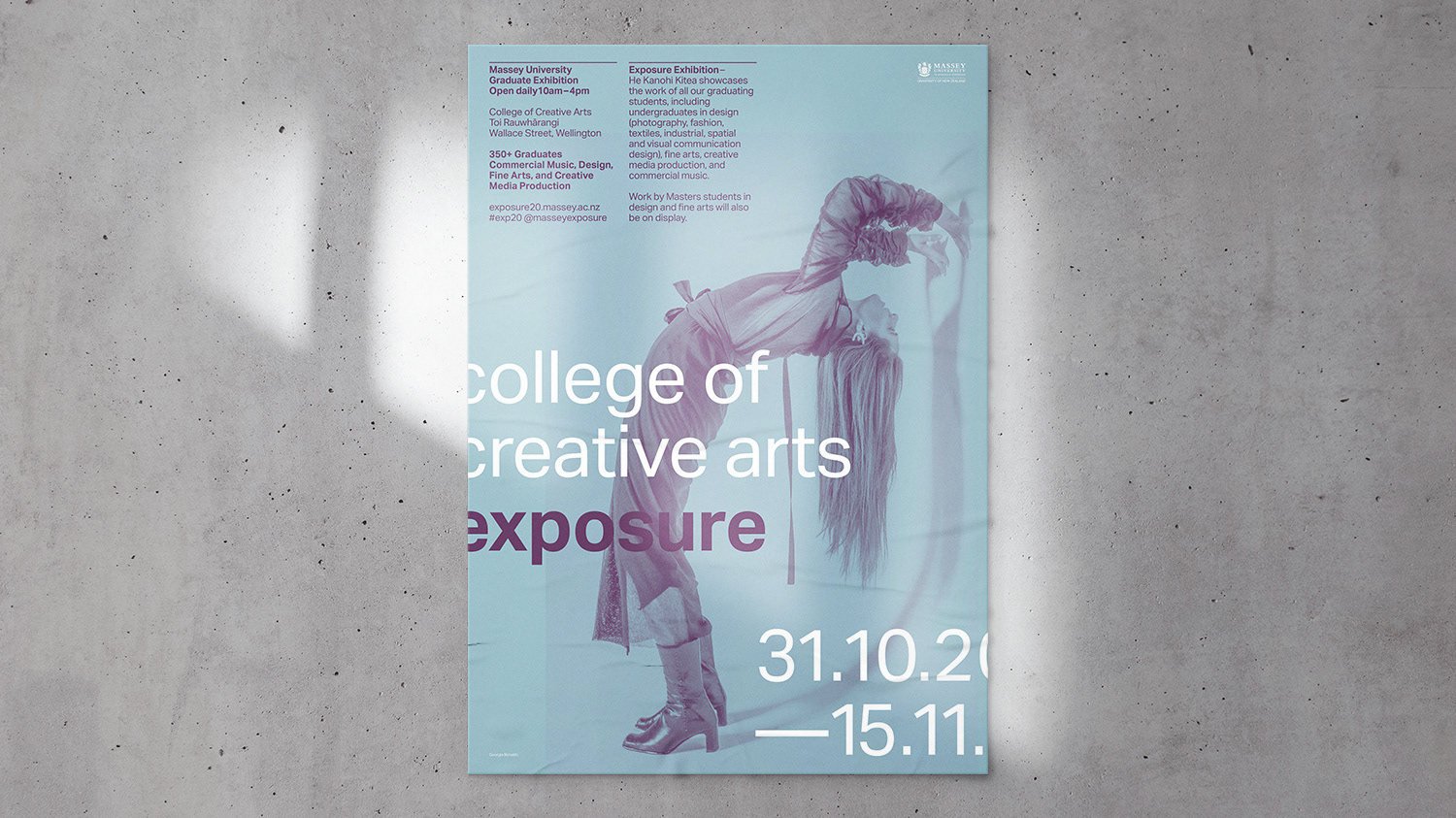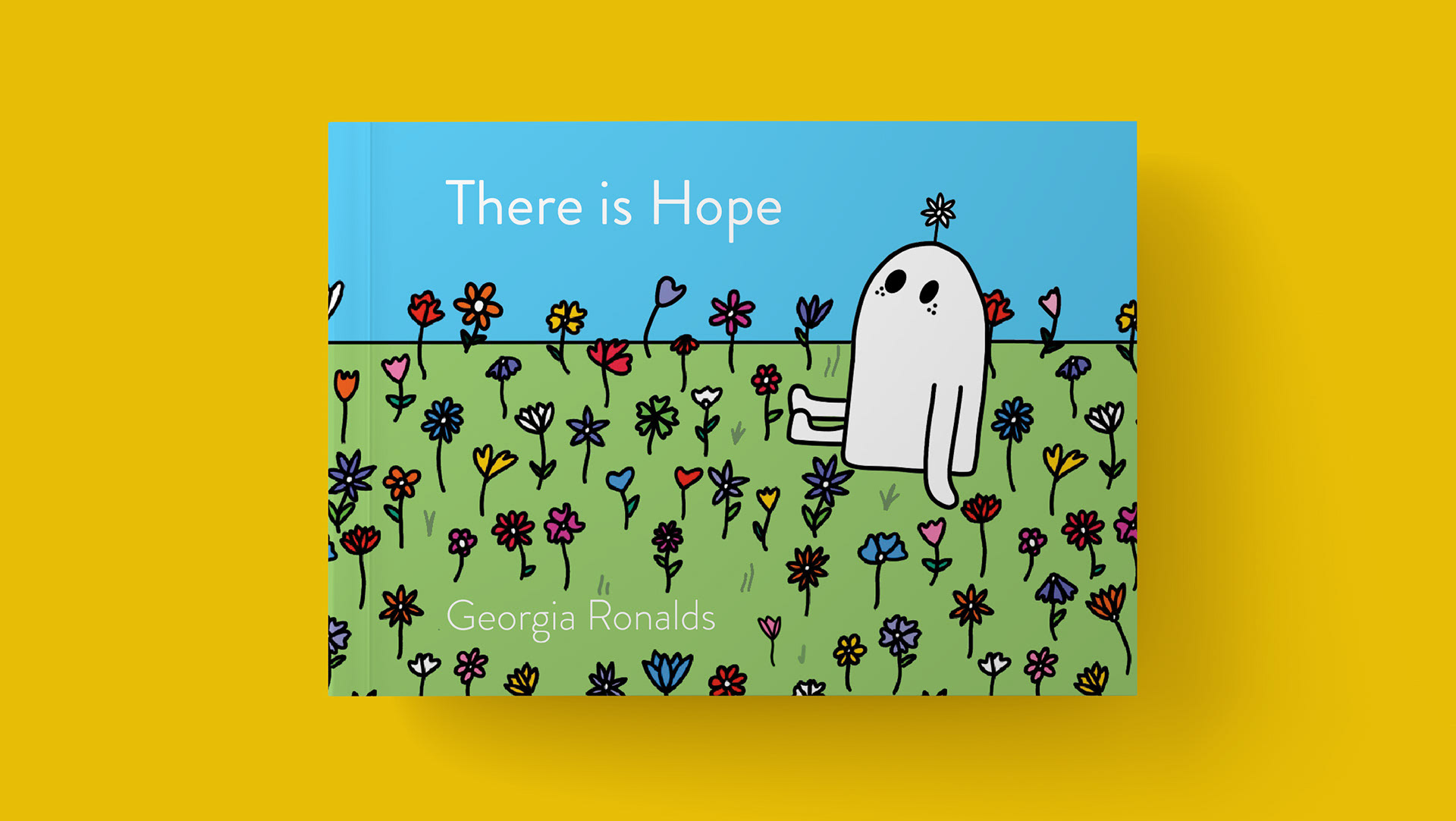In this paper, I got to discover, define, develop and deliver a proposal for a project that you will complete in semester two. I used design research methodologies, where I was able to explore a topic or issue through contextualisation, experimentation and iteration, gradually building towards your design proposal.
Abstract:
Mental health problems affect society as a whole, with as many as 450 million people who live with a mental or behavioural disorder (World Health Organisation: WHO). As our understanding of mental health grows, it becomes ever more apparent that mental health is crucial to overall well-being. Generally, mental illnesses are considered to be an invisible illnesses, leaving those who are struggling to feel that they are alone and hopeless. The importance of hope is found in the recovery process. Hope supports the recovery process, as recovery depends on the notion that the person desires to get better even when they face trials posed by their mental illnesses. One approach to creating hope is through the use of visual metaphors based on peoples lived experiences with mental illness, I will be designing for the person who is battling with mental illness/distress. I am creating a space that can initiate the sharing of emotions that are hard to verbalise. Using visual strategies, I am improving the ways that a person might talk about what they are experiencing, especially when it is hard for them to articulate. The use of storytelling can help people to feel less alone as it provides living proof to others who are also experiencing a mental illness, that they aren’t alone and that hope does exist. Utilising the use of visual tools and humour through empathy and lived experiences, I can take what is a difficult topic and make it more available for discussion. By externalising the internal and taking what is an invisible feeling that people often don’t have words for and then putting words to them, I will share what I create with other people in hopes that it might provide them with the help to find words to their feelings as well and by doing so I am designing for hope.
Central Proposition:
By externalising the internal, communication design can be used to create hope for those experiencing mental distress.
Visual Metaphors:
Visuals can hold emotion and are able to portray how one is feeling. When showing these illustrations, the viewer said that they were able to gain some insight into how someone with mental distress might feel. This was because the reader had experienced for themselves wearing an itchy jersey and the discomfort that came with it. From their experience, they were then able to relate it to how someone who is experiencing mental distress might feel.
